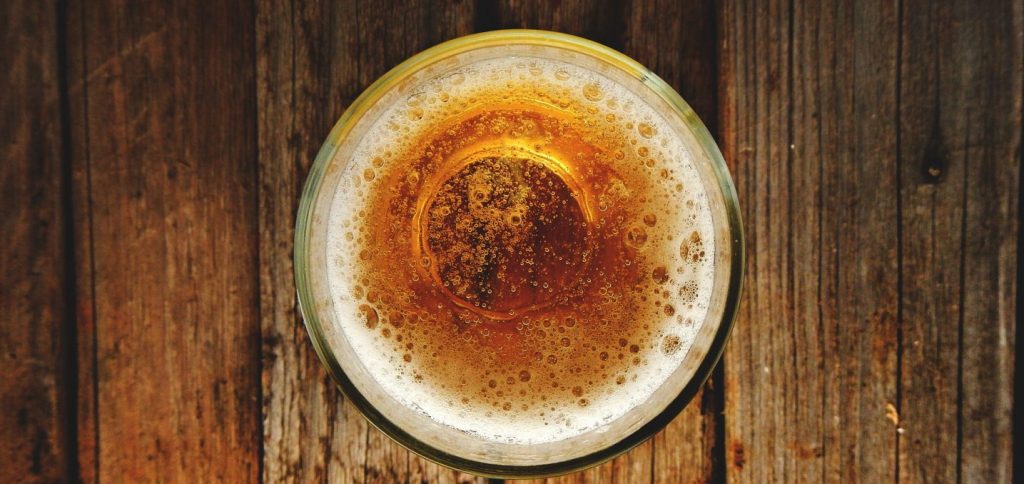The Strong Beer Festival heralds the start of Germany’s “fifth season”

Every year, a typical German beer style puts many people in a high-spirited, celebratory mood during Lent: The history behind traditional strong beer dates back centuries and brewers all across the globe are showing increasing interest in the style.
The strong beer, or “Starkbier,” season will once again be kicking off here in Germany in just a few weeks. People from all over the world travel long distances, in particular to Bavaria, to taste these specially brewed beers – which wield names such as Celebrator, Maximator and Anniversator – as part of traditional festivities in breweries and ale houses. Considered one of the most famous and popular events for hefty beers, the festival is held in Munich at the Nockherberg and is organized by the Paulaner Brewery, which was founded more than 380 years ago by monks. Salvator, a chestnut-brown double bock with an alcohol content of 7.9% is served at the festival and is considered to be the forefather of Bavarian strong beers.
The history of strong beer
As far back as the 15th century, the holy brethren from the Paulaner Abbey would make strong malty brews every year for Lent, during which they would have to abstain from consuming solid foods. To make this austere period of fasting more bearable, the monks would drink strong beers. After all, as the saying in the monasteries went: “Drinking doesn’t break the fast”. Besides, a liter of the hearty brew has almost the same nutritious value as a light meal. Most of these liquid malt bombshells are bock beers, which are more substantial than lagers and pilsners, among others, on account of the large amount of malt used in the brewing process. According to its description, this type of beer calls for at least 16% original wort and an alcohol content of around 7%. These values are even higher with double bocks.
Myths surrounding this time-honored style of beer
There are several myths surrounding this time-honored style of beer. Die-hard traditionalists to this day still maintain that bock beer was invented in Bavaria. However, its birthplace was neither Munich, Berlin, nor even Hamburg, but Einbeck in Lower Saxony. With 742 officially registered citizens who owned brew houses, this town with its half-timbered houses was once actually Germany’s beer metropolis par excellence. Strong bock beer was successfully traded there as far back as the 14th century but was known at the time as “Ainpöckisch Beer” and considered a food with a long shelf life. The market even expanded to include countries such as England, Sweden and Russia. The oldest invoice still in existence is for two tons of Einbeck beer and is dated April 28, 1378. That year was also the year that the Einbecker Brewery was founded, which invented the bock specialty. Even Martin Luther, an exceptionally gifted beer drinker, is said to have once uttered the words: “The best drink known to man is called Einbecker Beer.”
On account of the high quality already achieved at that time, the North German bock beers were also highly sought after by Bavarian Dukes and Princes. The beer tasted so good to them that they simply poached a master brewer from Einbeck who was tasked with producing the drink in Munich using the “einpöcksch” brewing style, as it was then known. Once the term entered the Bavarian vernacular, the local dialect ultimately gave rise to the term Bockbier (bock beer).
Bock beer is becoming increasingly popular all over the world
However, this type of beer is not popular during the strong beer season alone, and by no means is it popular in just Germany. Brewers across the globe, but particularly in the US, are now experimenting with various bock beer recipes. Weyerbacher Brewing Company in Easton, PA, for example, has created a 10.1% Weizenbock called Brau Heist, which features full-bodied aromas of baked banana. Even the Eisenbahn Brewery in Blumenau, Brazil, boasts a Weizenbock, though with an alcohol content of only 8%. The producers of the Dutch brewery Jopen have created a ruby-red 6.5% specialty bock from four different types of grain which they’ve named 4-granen Bok. Connoisseurs can now even find freshly brewed bock beer in Poland, Scandinavia and Africa. However, many international breweries continue to follow Germany’s lead and only release their bock beers seasonally.
